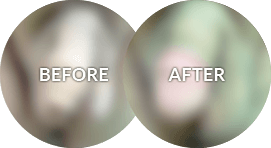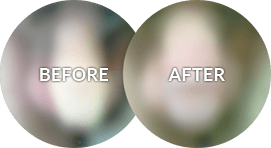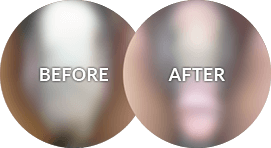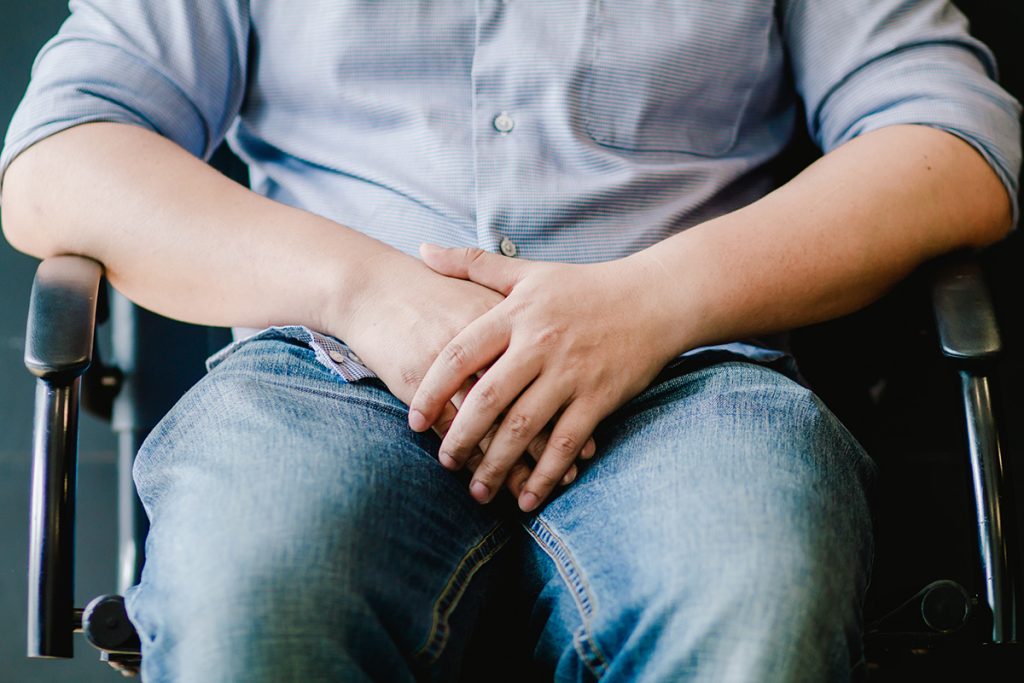Fordyce spots are small white spots that can appear on the penile skin. These spots are actually a form of sebaceous gland hyperplasia, which is a common dermatological condition affecting the penis.
Fordyce spots are harmless and non-contagious, causing no pain or discomfort to those who have them. They typically manifest as raised, pale, or yellowish bumps on the penile shaft. While their exact cause is not fully understood, it is believed that they occur when sebaceous glands, which normally produce oil to keep the skin lubricated, become enlarged.
It’s important to note that Fordyce spots are a benign condition and do not require any treatment from a medical standpoint. However, some individuals may choose to have them removed for cosmetic reasons or if they experience psychological distress due to their appearance. (1)
If you are concerned about spots on your penis, it is recommended to consult with a qualified medical professional, such as Dr. Mo Bidair of California Adult Circumcision. Dr. Bidair specializes in urological procedures and can provide expert advice and guidance regarding the management and potential removal of these penile spots.
To schedule a consultation with Dr. Bidair at his La Mesa practice, please call (619) 486-5005 or complete a short inquiry form.
Contents
About Fordyce Spots
The male genitalia, with its intricate anatomy and delicate skin, can sometimes be a cause for concern when abnormalities or changes occur. Like any other part of the body, it can be prone to various skin conditions. One such condition that may cause concern for some men is penile Fordyce spots. These small bumps, typically white or yellowish in color, can be found on the shaft of the penis, the scrotum, or even the lips. But why do we get them? Although there is no definitive answer, scientists believe they are linked to the following.
Sebaceous Glands
Sebaceous gland overgrowth is believed to play a role in the formation of Fordyce spots. These spots occur when the sebaceous glands, which are responsible for producing oil (sebum) to lubricate the skin and hair, become enlarged or overactive in certain areas.
Hormones
Hormonal changes can contribute to the appearance of Fordyce spots. Fluctuations in hormone levels, such as those that occur during puberty, pregnancy, or menopause, may trigger the development of these bumps.
Heredity
Genetic predisposition is another factor that may influence the occurrence of Fordyce spots. Some individuals may be more prone to developing these spots due to inherited characteristics or variations in their genetic makeup.
Blocked Hair Follicles
Blocked hair follicles can also lead to the formation of Fordyce spots. When the openings of the hair follicles become clogged with dead skin cells or excess sebum, it can result in the appearance of these bumps.
Blood Vessels
Weakened blood vessel walls have also been suggested as a possible cause of Fordyce spots. It is hypothesized that the structural weakness of blood vessels in certain areas of the body may allow sebum to escape and form visible bumps.
Age
The aging process has been associated with the appearance of Fordyce spots. As we age, our skin undergoes various changes, including alterations in the sebaceous glands, which may contribute to the formation of these spots.
Stress
Stress has been implicated as a potential factor in the development of Fordyce spots. While the exact mechanism is not fully understood, it is believed that stress hormones may influence the function of the sebaceous glands and contribute to the formation of these bumps.
Who Was Dr. Fordyce?
Dr. John Addison Fordyce was an American professor of dermatology in the late 1800s and early 1900s. In 1896, he described pale spots on the vermilion border of the lips, oral mucosa and genital mucosa, (2) which is why the spots are named after him.
Genital Warts vs. Fordyce Spots
Genital warts and Fordyce spots are two distinct conditions that can affect the genital area, but it is important to understand the differences between them. Genital warts are a sexually transmitted infection caused by the human papillomavirus (HPV), while Fordyce spots are benign skin conditions that are non-contagious.
Genital warts are small growths or bumps that appear on the genitals, including the penis, scrotum, vulva, or anus. They are typically flesh-colored or grayish in appearance and can be flat or raised. These warts can vary in size and may occur in clusters or as a single lesion. Genital warts are highly contagious and can be transmitted through sexual contact, including vaginal, anal, or oral sex.
On the other hand, Fordyce spots are small, white or yellowish bumps that can appear on the genitalia. They are caused by sebaceous glands, which are oil-producing glands that become more visible on the skin’s surface. Fordyce spots are usually painless and do not pose any health risks. Unlike genital warts, they are not sexually transmitted and are considered a normal variation of the skin.
To accurately differentiate between genital warts and Fordyce spots, it is essential to consult with a medical professional, such as Dr. Bidair. As a specialist in genital health, Dr. Bidair can provide a thorough examination and perform a differential diagnosis to determine the nature of the bumps or lesions. This personalized approach ensures an accurate diagnosis and appropriate treatment plan, if necessary.
If you have noticed any penile bumps or irregularities in the genital area, it is crucial not to self-diagnose. Contact California Adult Circumcision at (619) 486-5005 to schedule a consultation with Dr. Bidair and receive expert guidance regarding your specific concerns.
Other Lumps and Bumps
If it isn’t Fordyce spots, what else could it be? Penile bumps can come in different forms, including papules, pustules, ulcers, cysts, and warts. Each type may indicate a specific underlying condition, and it is essential to identify the characteristics of the bump to determine the appropriate course of action.
Pearly Penile Papules
Pearly penile papules, also known as PPP, are a common genital skin condition that affects some men. They are small dome-shaped bumps that appear on the ridge of the glans, which is the rounded tip of the penis. These bumps are typically flesh-colored or white and have a pearly or translucent appearance, hence the name.
It’s important to note that pearly penile papules are benign in nature, meaning they are not cancerous and do not pose any significant health risks. They are a normal anatomical variation and should not cause concern. However, due to their appearance, many men may mistake them for a sexually transmitted disease (STD). It is crucial to understand that pearly penile papules are not contagious and cannot be transmitted through sexual contact. If you find the presence of pearly penile papules bothersome and wish to have them removed, there are various treatment options available. Find details on pearly penile papule removal on the California Adult Circumcision website.
Herpes
Symptoms of herpes typically include small blisters or sores that appear on or around the genitals. These blisters may be accompanied by itching, tingling, or a burning sensation. Other common symptoms include swollen lymph nodes in the groin area, flu-like symptoms such as fever and body aches, and painful urination.
Penile herpes is caused by the herpes simplex virus (HSV). There are two types of HSV: HSV-1 and HSV-2. HSV-1 is commonly associated with oral herpes, while HSV-2 is primarily responsible for genital herpes. However, both types can cause genital herpes through sexual contact.
There is currently no cure for penile herpes, but antiviral medications can help manage and alleviate symptoms. These medications can help reduce the severity and duration of outbreaks, as well as decrease the risk of transmission to sexual partners. It is important to consult with a healthcare professional for an accurate diagnosis and appropriate treatment plan.
Tumors
Although rare, malignant tumors can develop on the penis. Early detection and prompt management are essential for favorable outcomes. Benign tumors, on the other hand, are non-cancerous growths that may still require treatment if they cause discomfort or affect sexual function.
If you notice any new or persistent penile lumps or bumps, it is advisable to seek medical attention promptly. A qualified healthcare professional, such as a plastic surgeon specializing in penile health, can accurately diagnose the condition and recommend appropriate treatment options.
Cost of Adult Circumcision in La Mesa
Dr. Mo Bidair is a leading Southern California urologist and male genital health expert. To receive personalized information about the cost of treating Fordyce spots and to explore adult circumcision options, we encourage you to schedule a consultation with Dr. Bidair at our Alvarado La Mesa Urology Center location. You can reach us at (619) 486-5005, or simply fill out a short inquiry form for further information about a personal consultation.
For more articles on penis health, read Dr. Bidair’s blog.
Interested in a phone consultation? Click here for more details.
FAQ
Are Fordyce spots the same as sebaceous glands?
Fordyce spots develop from sebaceous glands, but they are not the same thing. Sebaceous glands are present throughout our skin and produce oil (sebum) to keep the skin moisturized. In some individuals, these glands can become enlarged and appear as Fordyce spots.
Are Fordyce spots similar to pearly penile papules?
Pearly penile papules (PPP) are a condition that affects the penis, causing small, dome-shaped bumps around the corona or sulcus area. While PPP may resemble Fordyce spots in appearance, they are two separate conditions. Fordyce spots are caused by enlarged sebaceous glands, whereas PPP is believed to be a normal variation of the skin and not related to sebaceous glands.
Are there any self-care tips for dealing with Fordyce spots?
While Fordyce spots do not require medical intervention unless they cause significant distress or discomfort, there are some self-care tips you can follow to keep the affected areas clean and healthy. These include practicing good hygiene by gently cleansing the area with mild soap and water, avoiding picking or squeezing the spots, wearing breathable underwear, and maintaining a balanced diet and lifestyle that supports overall skin health.
References
- Radhakrishnan S, Agarwal DC. Fordyce spots masquerading as penile warts. Medical Journal Armed Forces India. 2016;72(4):384-385. doi:https://doi.org/10.1016/j.mjafi.2015.12.008
- Lee JH, Lee JH, Kwon NH, et al. Clinicopathologic Manifestations of Patients with Fordyce’s Spots. Annals of Dermatology. 2012;24(1):103. doi:https://doi.org/10.5021/ad.2012.24.1.103





